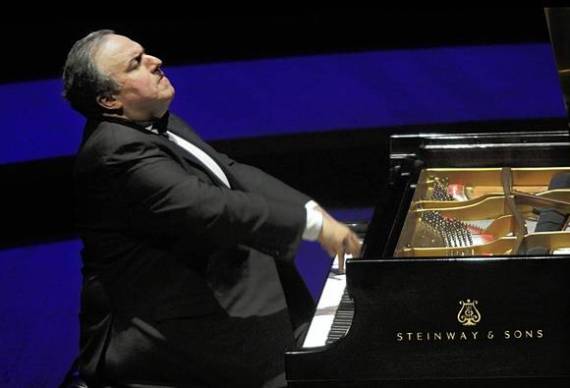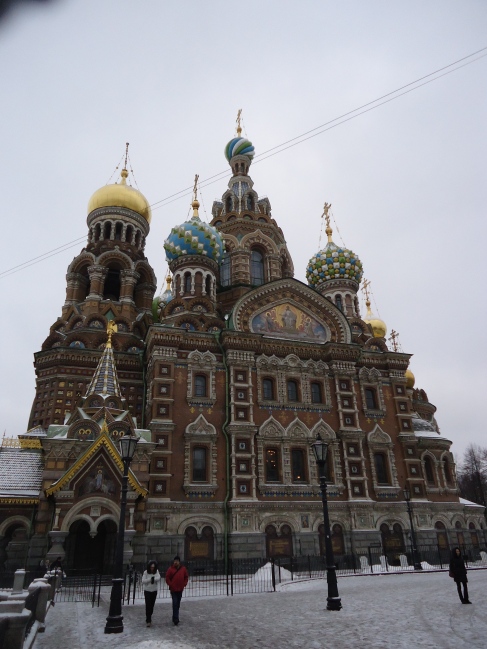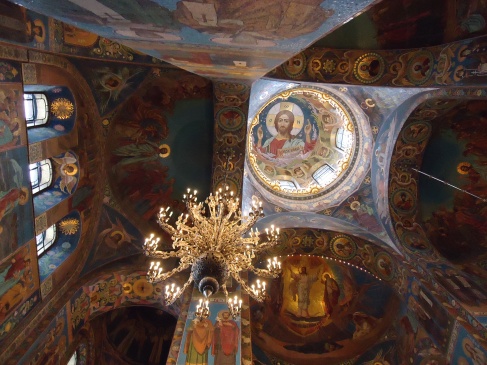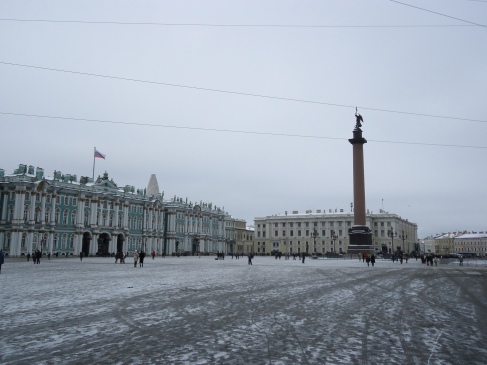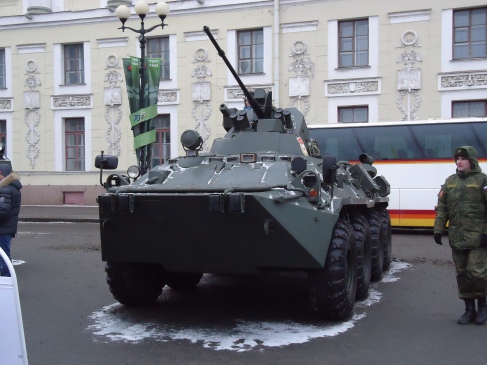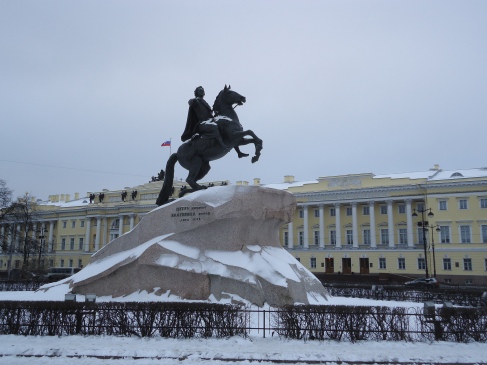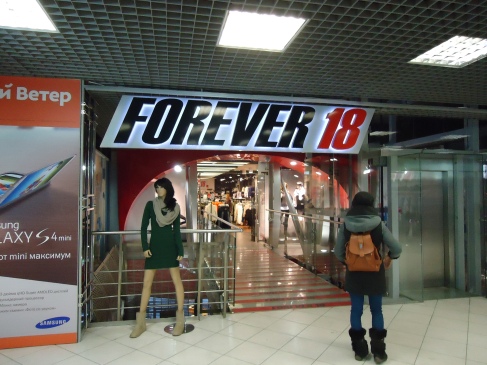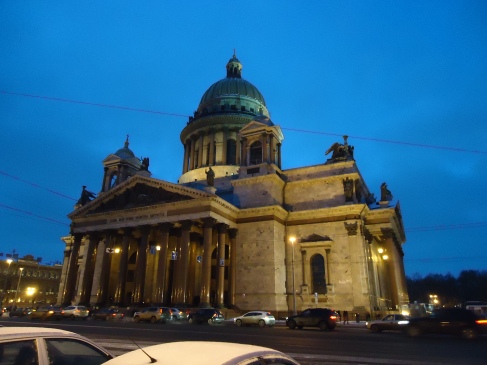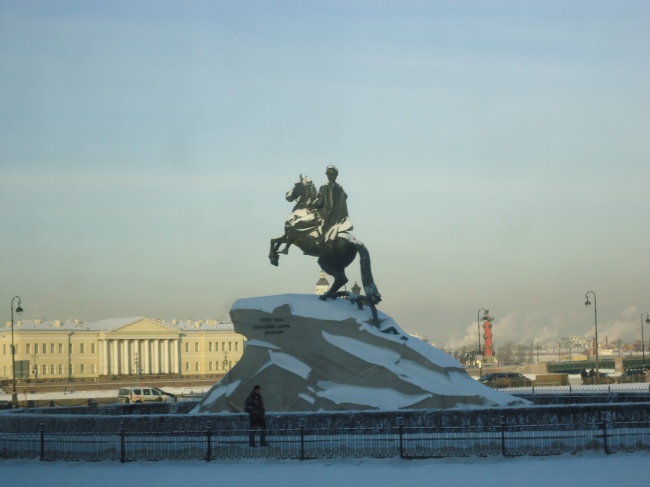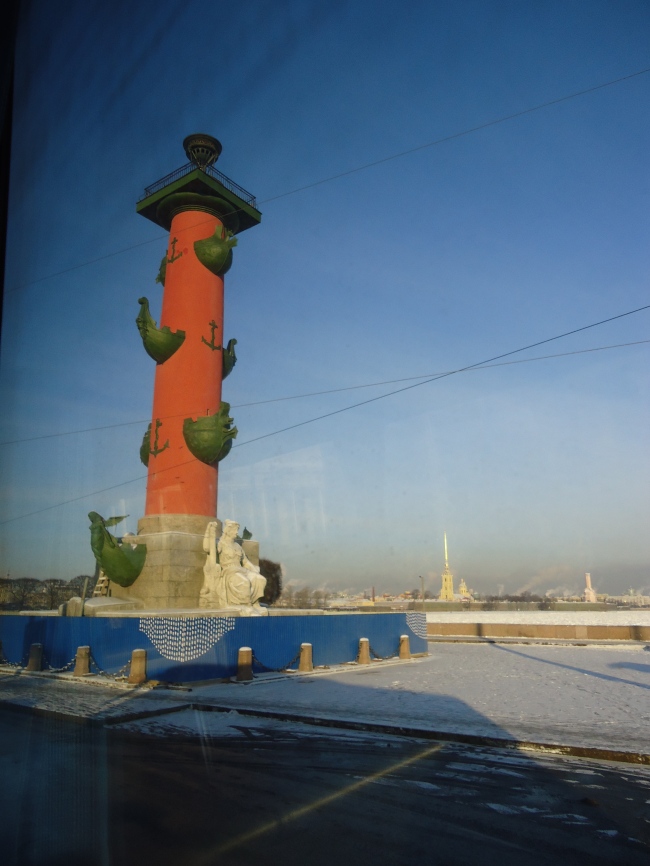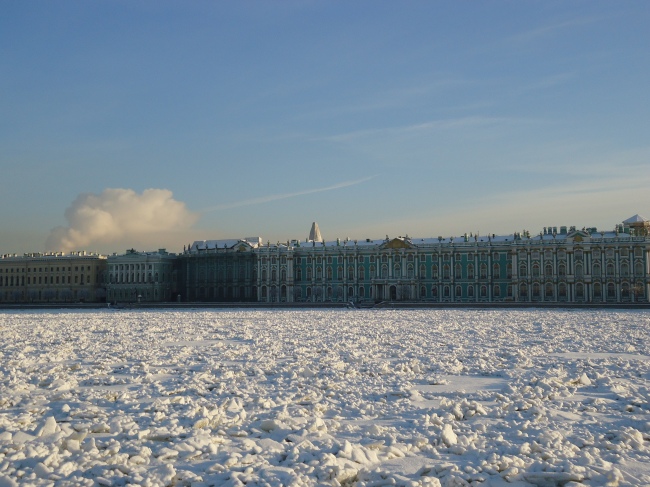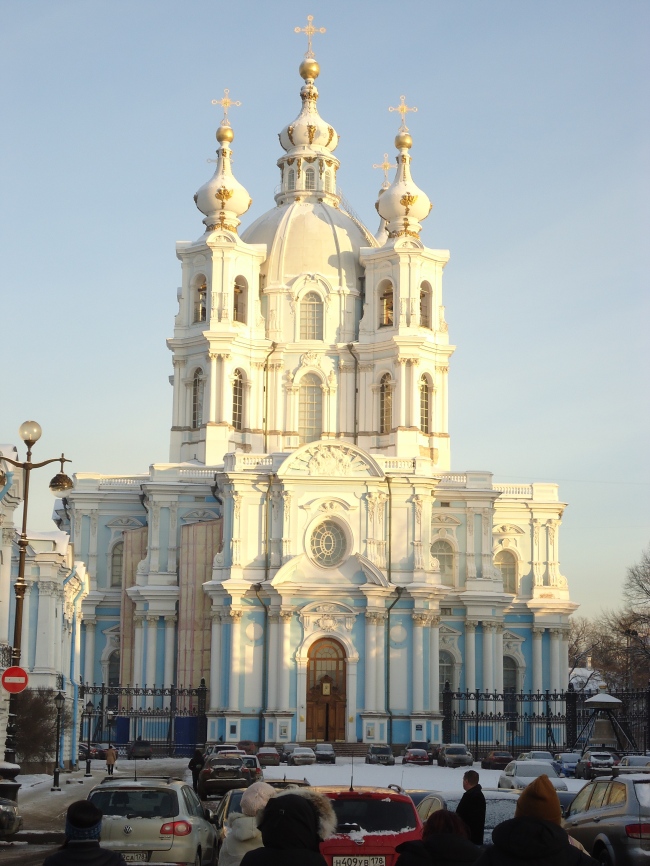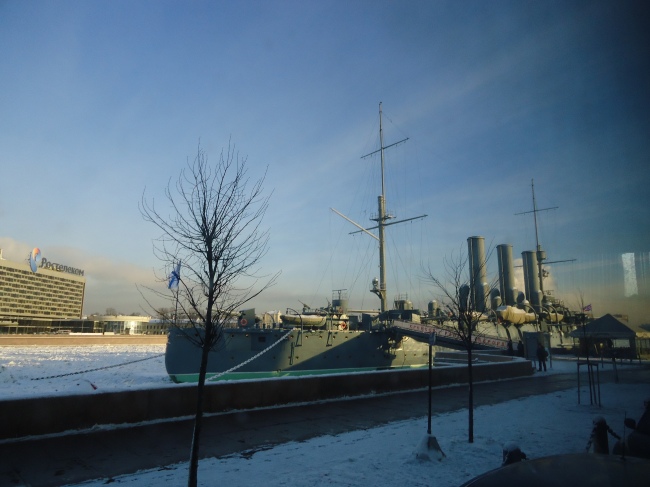Yesterday marked a week since my arrival in St. Petersburg, and I am already adjusting to something of a routine. Jet lag is a thing of the past, I am growing comfortable with the city’s bus and metro systems, and at Smolny we have just finished the first half of our two-week Russian language intensive. This routine will change somewhat in a few weeks, of course, as the academic semester begins and we enroll in other courses, many of them taught in Russian, alongside Russian students. That, I imagine, will be much more “intensive” than what we are doing now!
Still, it feels good to settle into a routine, even a temporary one. Part of the satisfaction of studying abroad, I think, lies in the realization that it is possible to create a new routine, and adjust to a new way of life in a foreign country. At the same time, though, an authentic abroad experience should never become too comfortable. No one travels halfway across the world to experience the familiar, and from my experience, the most meaningful moments when traveling are the unexpected ones—the unique experiences we stumble into just when we are getting comfortable.
I was fortunate enough to have just such a moment on Tuesday. On our first day of language classes, when I came back to my home stay expecting to spend the rest of the day doing homework and resting, I instead found myself attending a 3-hour Beethoven concert at the Marinsky Theatre Concert Hall—and for free, no less.
As it happens, I was placed with a very musical host family. Both of my host parents, Sergey and Zhanna, regularly sing in local choirs during their free time, and on Tuesday morning Sergey invited me to his concert that night. When I came home later in the afternoon, though, his daughter Masha suggested that there might not be tickets, so I didn’t get my hopes up. But sure enough, he managed to get hold of two tickets to the sold-out show.
So just before 8, I walked down with Masha to see the concert. The concert hall, an impressive and imposing modern building opened in 2006, turned out to be practically next door to our apartment. Masha was a helpful guide as we navigated the masses of Russian concertgoers checking their coats and shuffling to their seats. Since the show was sold out, our tickets let us sit on standalone wooden chairs on the right balcony. Good enough for me.
I do not pretend to know much about classical music, but the first half of the concert was dominated by Yefim Bronfman, a world-renowned pianist who played Beethoven’s Piano Concerto No. 4. Aside from his incredible musical abilities, it was a spectacle to simply watch Bronfman—a big, hulking presence of a man—go at the piano. As Wikipedia helpfully informs me, Philip Roth devoted a passage in his novel The Human Stain to describing Bronfman’s technique. I’ll let Roth take over for a minute:
“Then Bronfman appears. Bronfman the brontosaur! Mr. Fortissimo. Enter Bronfman to play Prokofiev at such a pace and with such bravado as to knock my morbidity clear out of the ring. He is conspicuously massive through the upper torso, a force of nature camouflaged in a sweatshirt, somebody who has strolled into the Music Shed out of a circus where is the strongman and who takes on the piano as a ridiculous challenge to the gargantuan strength he revels in. Yefim Bronfman looks less like the person who is going to play the piano than like the guy who should be moving it. I had never before seen anybody go at a piano like this sturdy little barrel of an unshaven Russian Jew. When he’s finished, I thought, they’ll have to throw the thing out. He crushes it. He doesn’t let that piano conceal a thing. Whatever’s in there is going to come out, and come out with its hands in the air. And when it does, everything there out in the open, the last of the last pulsation, he himself gets up and goes, leaving behind him our redemption.”
After Bronfman finished the concerto, the applause was so unceasing that he kept coming out to do encores, looking increasingly weary each time he did so. Finally the man was allowed some rest as the first half of the concert closed and a 20-minute intermission began.
The second half was really what I was there for. Conducted, as was the first half by Valery Gergiev—another pre-eminent classical musician and the current artistic director for the Marinsky—the orchestra led a performance of Beethoven’s 9th Symphony. A large choir, including Sergey in the far back, stood behind the orchestra, patiently waiting the moment when they would chime in.
I was waiting, too. Being a classical music ignoramus, the extent of my knowledge of the 9th Symphony was that it was famous. I kept glancing to the choir and wondering when they would start singing, since there were no vocal parts for most of the symphony.
And then the “Ode to Joy” began. This I knew, of course. The familiar tune (known to me as the hymn “Joyful Joyful We Adore Thee”) began softly, played only on a double bass. But step by step, the entire orchestra joined in, and then, finally, the choir. It was an exhilarating thing to witness, a spectacular payoff to all of my impatience. I lack the technical ability to describe such music, but no matter. It was one of those moments when you feel lucky to be in the presence of an artistic genius above your understanding.
After the concert, there was a mad rush to grab our coats and hats and make our way out of the building. I have rarely seen such a mad, crowded place as the theater lobby after the show—everything you might have heard about Russians lacking a sense of personal space seemed true in that moment. Then it was back to the apartment to eat dinner—at 11 pm!–and yes, do the homework that I had not yet started.
Needless to say, I had no regrets—and I probably would have procrastinated anyway. Attending a free concert at the Marinsky Theatre Concert Hall isn’t a bad way to do it.
